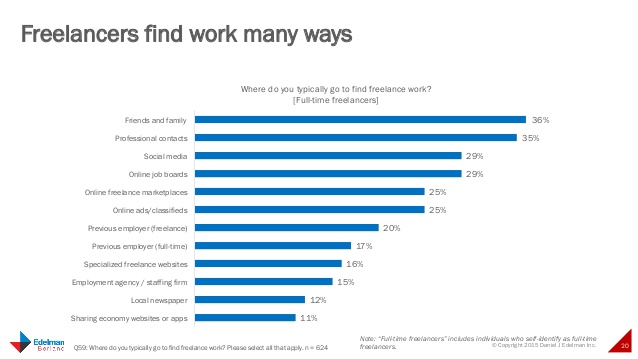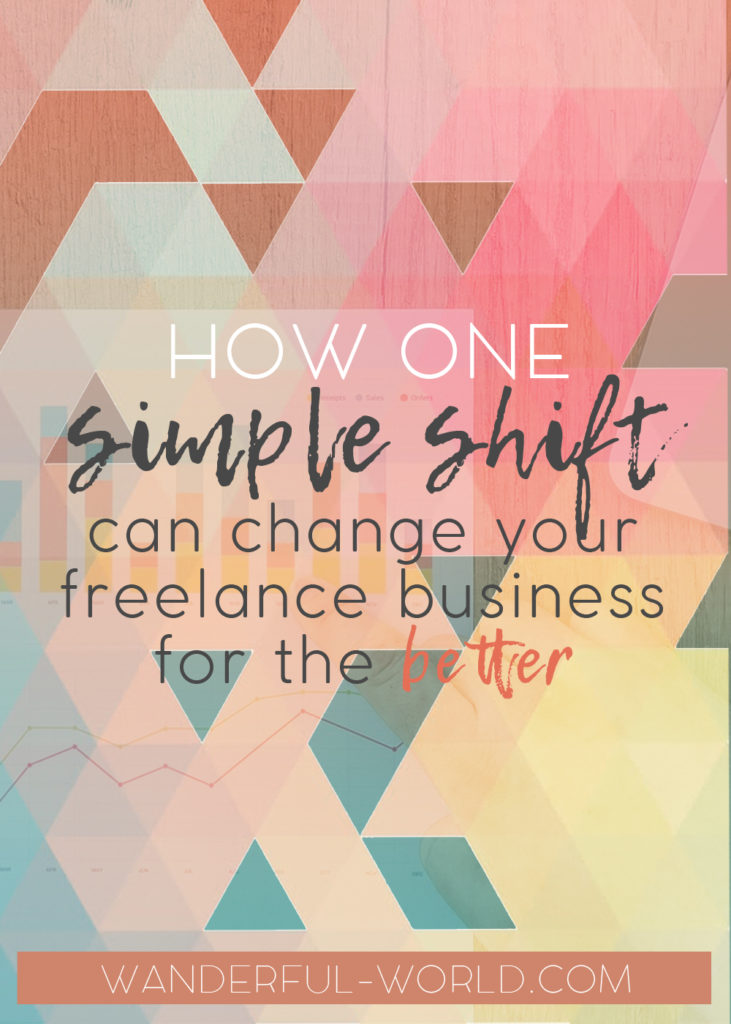Psssttt...

Ready to find high-paying clients and build a profitable business?
Get your free copy of Win More Clients, a 20+ page eBook that shows you how to get paid more and the secret sauce you need to create a sustainable freelance business
There’s a saying I absolutely love: if you don’t ask, you don’t get.
This rings so true for pitching.
Think about it: if you’re not putting yourself in front of the right clients (you know, clients that you dream of working with), how will they know you’re open for business?
Yes, it’s terrifying, because – gasp! – you have to actively reach out to potential prospects and sell yourself, but it also has the power to completely turn your business on its head (here’s a quick guide to help you get over the fear of pitching).
Here’s why.
When I first started freelancing, I was applying for jobs on sites like UpWork and via job boards. I wasn’t alone in using these methods. In fact, a quarter of freelancers use online marketplaces to find work, while 29% use online job boards to scour positions.

This meant I had to wait until something suitable came up and then pitch myself against hundreds of other freelancers who had also been sitting there waiting for the perfect job to pop up.
Already, there are two strikes against me with this method: I had to WAIT to apply for jobs, which meant when there were no “suitable” jobs, I didn’t have any work, and I was up against hundreds of other freelancers, many of which had much more experience than I did.
As you can imagine, it was a lose-lose situation for me, and I quickly became frustrated with the lack of work and the crappy clients who did decide to take a punt on me.

Put yourself in this scenario:
You’re a new freelancer, scouring content mills like UpWork and looking for your next gig. You don’t have a roster of clients to tap into, so instead you’re having to go out hunting every single day.
Each morning, you scroll through twenty pages of job listings, and apply for around ten positions a day. That’s good going, right?
Yes, but there’s a problem.
The clients those jobs are posted by already have the power.
- They have the power to set the pricing.
- They have the power to set the scope of the project.
Why? Because they have the pick of the bunch.
To give you an idea of how many freelancers respond to a job post, I once put a call out for a copywriter and within two hours I’d received almost 50 applicants.
When clients are getting this many freelancers to choose from, they’re going to choose the one that suits them best – not the one who can necessarily help them the most.
Despite most businesses wanting to hire the best of the best, there are always other factors at play, like budget and stern orders from people higher up.
And when someone else has the power, it’s difficult to create a business that you’re in control of.
When the client is setting the budget and the scope, you’re essentially a commodity rather than an expert, which is when you come up against clients that don’t value what you’re offering and refuse to pay you what you’re worth.
Which means – you got it – you’ll struggle to keep your head above water while working with less-than-ideal clients.

The biggest complaints freelance writers have about freelancing is the uncertainty in income and finding new clients – both of which can be tackled with pitching. Source.
This is where pitching comes in or, as I like to call it, taking back the power.
As soon as YOU start reaching out to clients rather than settling into the role of a faceless commodity amongst hundreds of others, you’re readdressing that power imbalance and taking back control.
How so?
Take a peek at my story:
When I started writing cold emails myself (a.k.a. actively reaching out to the perfect prospect), three things happened:
1. I was no longer waiting around for the “right” job
Instead, I was putting myself out there and actively exerting control of my business.
I was choosing who I wanted to work with rather than taking what I could get. This led to projects with awesome clients and a renewed love of my career – you can’t put a price on that!
If I hadn’t started pitching, I would still be working with crappy companies that were more concerned about keeping their budget tight than how my words could help them build their business into something amazing.
When I did start pitching? I was actively hunting down clients I wanted to work with. I wasn’t a passive receptacle in my own career. Instead, I was the driving force behind making it bigger and better.

2. I was no longer up against hundreds of other freelancers
Competition in the freelance world is fierce, and standing out is like struggling uphill through thick toffee – it’s not easy!
But it’s even harder to stand out when your email gets buried amongst hundreds of others that are exactly the same.
Let’s go back to that job ad I put out for a copywriter.
You’d be amazed at how many of the emails I received were essentially the same. I couldn’t differentiate between some freelancers and others, so their emails went straight into the bin – and yours have probably seen the same fate, too.
When I started pitching, though?
My messages in prospects’ inboxes stood out because they weren’t buried among numerous others. I didn’t have to jump through hoops like putting weird subject lines in at the request of the client. Instead, I could sell myself as the expert I was, rather than sell myself as just another commodity.
3. I was no longer fighting to win jobs
Instead of trying to make myself stand out with accolades I’d been awarded in an attempt to claw my way into the eyeline of prospects, I was sharing my skills and expertise with people who needed it.
Instead of answering questions like what my price was per 1,000 words or how quickly I could turn work around, I was creating connections with prospects that showed I understood their brand and could help them reach their goals.
This meant prospects valued my work more and, therefore, were willing to pay me much, much more for my services.
I went from earning $20 a piece to earning more than $300 per piece.
This change was solely because I shifted the power from the hands of the prospect into my own. I shifted my mindset from commodity to expert, and focused on building relationships with prospects I really believed in rather than scrabbling to the bottom just to win a gig that was, let’s face it, incredibly below par.
You see?
Pitching might seem terrifying but it is SO important if you want to build a business that you LOVE.
Sure, you can carry on waiting around for the right job and hope you’ll stand out against hundreds of other freelancers.
Or you can take the bull by the horns and get in control of YOUR business, work with clients YOU want to, and create solid relationships with people who value your work.
If you haven’t started pitching yet, why not? What’s stopping you from getting out there and getting amazing clients?
Let me know in the comments!
And, if you HAVE started pitching, how did it change your business?







0 Comments